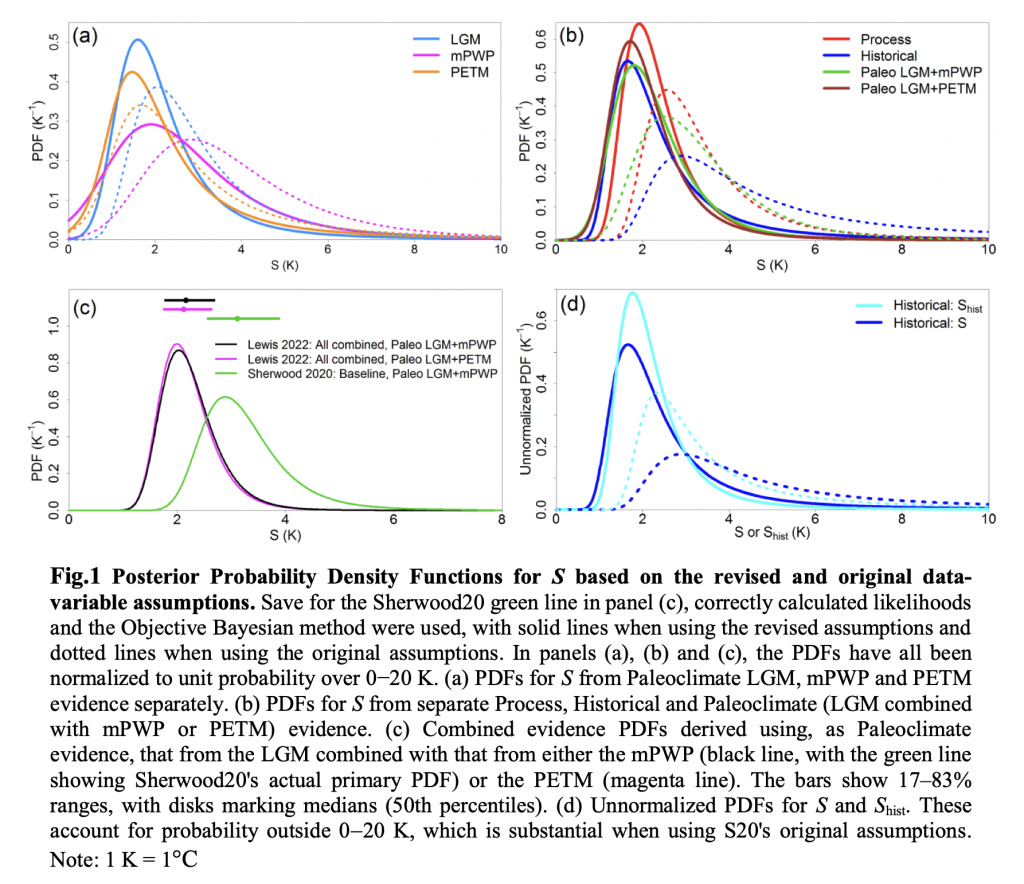Official IPCC estimates of future global warming may be overstated
London, 20 September – A new paper reduces the estimate of climate sensitivity – the amount of warming expected for a doubling of carbon dioxide concentrations – by one third. The results therefore suggest that future global warming will be much less than expected.
The paper, by independent scientist Nic Lewis, has just appeared in the journal Climate Dynamics. It is an important challenge to the official view of the Intergovernmental Panel on Climate Change (IPCC).
Lewis has critiqued a 2020 assessment of climate sensitivity by Sherwood et al., which strongly influenced the IPCC’s Sixth Assessment Report, in 2021. Lewis commented:
“It is unfortunate that Sherwood et al.’s assessment of climate sensitivity, which underpinned the UN Framework Convention on Climate Change, contained such serious errors, inconsistencies and deficiencies in its methods”.
After correcting the Sherwood et al. methods and revising key input data to reflect, primarily, more recent evidence, the central estimate for climate sensitivity comes down from 3.1°C per doubling of CO2 concentration in the original study to 2.16°C in the new paper.
This large reduction shows how sensitive climate sensitivity estimates still are to input assumptions, and that values between 1.5°C and 2°C remain quite plausible.
- Climate sensitivity represents the long-term global temperature increase caused by a doubling of atmospheric CO2 concentration. There are different measures of climate sensitivity. Both the Sherwood and Lewis papers estimate the so-called ‘effective’ climate sensitivity, which reflects a new equilibrium state projected from centennial changes after a doubling of the CO2 concentration. This measure is considered the most relevant one for predicting climate change in the coming two centuries.
- Climate sensitivity has always been a very important, but also highly uncertain, parameter in the climate change discourse. Earlier IPCC reports assessed its value as likely to be somewhere between 1.5°C and 4.5°C, with a best estimate of 3°C. However, prompted by the Sherwood paper, the 2021 Sixth Assessment Report moved that range upwards, to 2.5 to 4°C. Although for outsiders this might sound boring, for insiders it was a revolutionary change.
- Lewis’s corrections and revisions lead to a likely range of 1.75 to 2.7°C, which is not only lower but is also much less uncertain than either the 2021 official IPCC assessment or the very similar Sherwood et al. estimate (2.6 to 3.9°C).
- Nic Lewis is the lead or sole author of ten peer-reviewed papers on climate sensitivity. He was a participant in the 2015 workshop that kicked off the World Climate Research Programme project that led to the Sherwood et al. 2020 paper, but he was not a co-author of that paper.
Lewis commented:
“The substantial reduction in assessed climate sensitivity upon updating key input data suggests that the increase in the bottom of the climate sensitivity range in the IPCC Sixth Assessment Report was unjustified”.
Lewis’s paper is entitled ‘Objectively combining climate sensitivity evidence’. It can be freely downloaded here. A detailed explanatory article about the paper is available here.

Contact
Nic Lewis
nhlewis@btinternet.com
